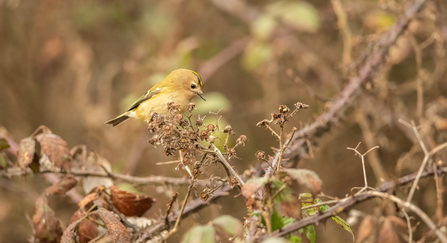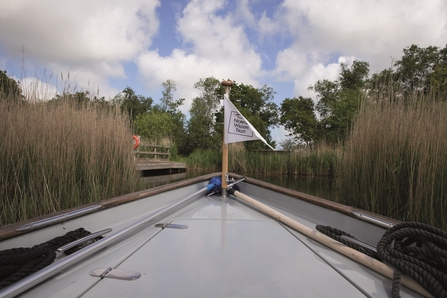Birdwatching is certainly an acquired taste. It is often seen as boring and - let's be honest - not many people enjoy it. This is because it can be a very frustrating hobby as, to be a birdwatcher, you need to be stealthy and patient. But if you are prepared to put in a little effort then I promise you, what you get out is no better feeling!
Birds on the whole are often very nervous and don't allow you to get up close, however, this varies with species. I’ve struggled, for example, to get within 10 meters of a grey wagtail, but have found goldcrests completely oblivious to my presence. I hope this post will aid you in your birdwatching journey in an unobtrusive, respectful way and help you get good views of lots of interesting birds!
Do your research
Goldcrest in an alder tree showing its lovely crest by Elizabeth Dack
It won't do any good looking for bitterns in the city centre, or wildfowl in open farmland! You should know at least what the bird you’d like to see looks like, where it is found and ideally be able to separate it from other, similar species. To collect this information, a wildlife identification guide is the way to go – a good guide is like a bible for birdwatchers. I would personally recommend British Birds: A Pocket Guide by WildGuides or Collins Birds of Britain. These were both a great aid to me when starting out. The WildGuides series cover almost every aspect of nature in Britain, and are extremely informative.
Just beware: an out-of-date wildlife guide will not show the correct range maps or stats. It is sometimes better to use a regularly updated website, such as the Woodland Trust, Royal Society for the Protection of Birds or Norfolk Wildlife Trust, than a book.
Utilise local information
Sometimes the best way to ensure you get to see something is simply to ask around. If what you're looking for is well-known and sought after, there will be other birders searching for the same thing. More often than not, naturalists will be more than happy to aid a fellow wildlife enthusiast in their quest. And if you're at a reserve, there is usually a daily sightings board plus wardens who are present and happy to help.



